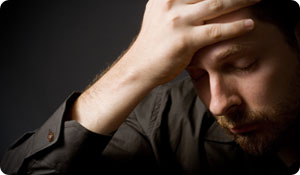
Panic attacks are frightening and disruptive enough; you don't need the additional stress of worrying about whether common misconceptions about panic disorders are true.
Panic disorders cause sudden and repeated attacks of fear despite the absence of any real danger. Although panic attacks can seem interminable at the time, an attack generally lasts only a few minutes. About six million adults suffer from panic disorders. They generally begin in individuals' late teens or early adulthood years, and women are more likely than men to experience them.
Putting the Nix on Common Misconceptions
Myth: Panic disorders only occur in people who are emotionally weak or who have serious mental illness.
Fact: Panic attacks can strike anyone, although they tend to run in families. There are also biological explanations for panic disorders. Studies have linked them to a specific hormone in a brain circuit that regulates vigilance. Too much of this hormone may lead to panic attacks. Other studies suggest that the brains of people with panic disorders are lacking in a type of serotonin receptor. Serotonin is a neurotransmitter that regulates emotion.
Panic disorders are not a personal weakness or sign of mental illness, and having occasional panic attacks don't necessarily lead to panic disorder.
Myth: Everyone will know I'm having a panic attack.
Fact: While the feelings of fear and anxiety are very real to you when you're having a panic attack, remember, they're just in your mind. The people you're with are not aware of them and may not know you're having a panic attack.
Myth: Specific situations trigger panic attacks.
Fact: It's common to associate specific places or activities with panic attacks if that's where (or when) they occurred. And while certain situations might trigger a panic attack, there are other triggers as well.
Myth: Panic attacks produce physical symptoms but physical conditions do not cause panic attacks.
Fact: Many individuals do experience physical symptoms during panic attacks, such as a racing heart, sweating, or difficulty breathing.
However, physical conditions such as heartburn or a headache can also trigger a panic attack. Individuals with depression and anxiety may also have a predisposition to developing panic attacks after consuming high doses of caffeine. If you're concerned about panic attacks, it may be best to skip the coffee.
Myth: Drugs are the only treatment for panic disorders.
Fact: Medications such as antidepressant or anti-anxiety drugs may be part of a patient's treatment for panic disorders. However, Cognitive Behavioral Therapy (CBT), a type of psychotherapy, is probably the most effective treatment. During CBT, a qualified therapist will gradually expose you to different experiences in a safe environment to help you learn to cope with anxiety-provoking situations.
Sources:
Brothers, Joyce MD. "Quiz helps dispel myths about panic disorders." Seattle PI. Web. 25 March 2008.
http://www.seattlepi.com/brothers/354263_joyce326.html
PanicAttacksDisorders.org. "Anxiety Disorder Panic Attack Myths Debunked." Web.
http://www.panicattacksdisorder.org/anxiety-disorder-panic-attack
National Institute of Mental Health. "Panic Disorder: When Fear Overwhelms." Web. 18 January 2011.
Busko, Marlene. "Caffeine Challenge Induced Panic Attacks in Patients with Panic Disorder." Comprehensive Psychiatry 48 (2007): 257-263. Medscape Medical News. Web. 22 June 2007. http://www.medscape.com/viewarticle/558744
National Institute of Mental Health. "Runaway Vigilance Hormone Linked to Panic Attacks." Science Update. Web. 28 December 2009.
http://www.nimh.nih.gov/science-news/2009/runaway-vigilance-hormone-linked-to-panic-attacks.shtml
National Institute of Mental Health. "Emotion-Regulating Protein Lacking in Panic Disorder." Web. 26 June 2008.
http://www.nimh.nih.gov/science-news/2004/emotion-regulating-protein-lacking-in-panic-disorder.shtml





